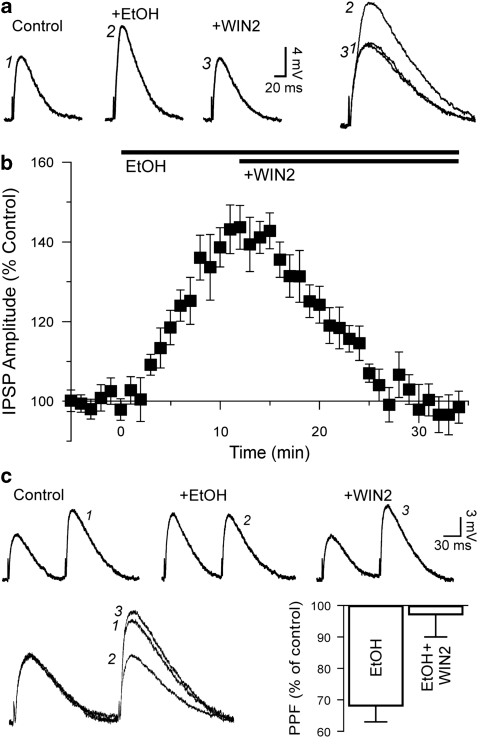Figure 6.
The effect of ethanol on GABA transmission is reversed by WIN2. (a) Superfusion of ethanol (EtOH) onto this representative neuron increased the amplitude of the evoked IPSP. Addition of WIN2 in the continued presence of ethanol completely blocked the effect. RMP was −77 mV. (b) Pooled data showing the reversal of the ethanol effect by WIN2. Ethanol (44 mM, t=0) increased IPSP amplitudes to 141% of control. Subsequent addition of 2 μM WIN2 (t=12) brought IPSP amplitudes back to 98% of preethanol values. (c) Top: recordings obtained using the paired-pulse paradigm. Ethanol increased the primary IPSP but slightly decreased the secondary IPSP, showing a decrease in PPF, an effect completely reversed by WIN2. Bottom left: for scaled P1 amplitudes, P2 was much smaller in the presence of ethanol, an effect reversed by the subsequent addition of WIN2. Bottom right: ethanol (44 mM) decreased the mean paired-pulse ratio to 68% of control, and 2 μM WIN2 brought PPF values back to 97% of preethanol level. The data suggest that ethanol and WIN2 interact at a presynaptic site.

